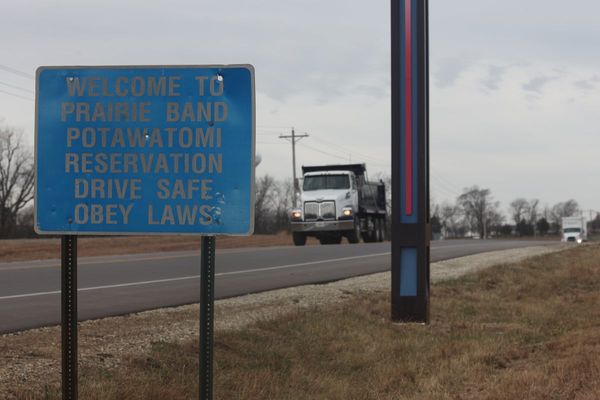
For a generation of liberal democratic leaders shaped by the verities of the 1990s, the prospect that new media and communications technologies would deliver their citizens to fascism and war has seemed, until recently, unthinkable.
Today, waves of racist violence facilitated by mass-scale misinformation have finally invited the beginnings of some response. The fate of the US, and the poisonous entente of corporate media monopoly and far-right leadership, has made the prospect of anti-democratic contagion now impossible to ignore. Measures to protect the young have taken shape with relative speed, with Australia extolling its pioneering (and unproven) initiatives on age-verification and social network restriction due to take effect on 10 December.
The relationship between transnational monopolies, mass media, sovereignty, human rights and democratic freedom has been placed on the national and global agenda. The nexus is almost invariably presented as a new threat, the perilous fruit of technological change, encountered for the first time without meaningful precedent.
Every age assumes the dislocations of its time are exceptional, but the present one seems particularly indifferent to earlier moments of technologically induced disequilibrium. Almost exactly a century ago, the League of Nations, precursor to the United Nations, devoted substantial energies to the international suppression of obscene publications, animated in part by the purported corruptive power of the motion picture. There was even an international ban on such “obscene” products, which Australia eventually signed.
Maligned as it was, the League rapidly grasped the potential of the first truly transnational media form: the radio. Hopeful proposals for both radio and film in the service of peace, education and international understanding soon developed. Australia dutifully signed up to the relevant League treaty.
But more impressive perhaps was the League’s comparative agility when the pitfalls of radio, rather than their promises, became apparent. As the shadow of Nazi ideology began to fall on Geneva in the 1930s, League intellectuals and jurists conferred over several years on the threat posed by what was termed at the time “false news”. League conferences on the subject affirmed that “the campaign against the spread of inaccurate news was one of the necessities of international life” and mapped out countermeasures.
Their deliberations exemplified the prescient futility that characterised so much of the organisation: by the point at which propaganda radio broadcasts were formally banned in 1936, fascist forces were contesting not merely the airwaves, but the ground, the seas and the air.
Even then, though, the much-mocked League did show surprising energy, insisting that broadcasters transmit corrections to fascist claims. Debate in the Australian Senate noted the propaganda potential of radio, though remained, almost on the eve of world war, inclined to optimism about the new medium. By May 1939, in the right conditions, the propaganda broadcasts of Nazi Germany could reach Australian homes – and some even directly addressed Australians.
For Australian senator Macartney Abbott, this was a kind of paradoxical demonstration that radio could be used by others for international dialogue. As on disarmament and peaceful dispute resolution, the League’s experts were weak and correct – and appreciated much too late.
Almost a decade of destruction later, the fledgling United Nations revisited many of the League’s same questions. Delegates recognised that early electronic and industrial-scale mass media, especially when forged alongside radically new armaments and hyper-centralised state power, demanded moderation and management.
From the very first days of the organisation in early 1946, the problem of “freedom of information” was among the most prominent items on the agenda for building what Eleanor Roosevelt would term “a world made new”. Well before the two signature achievements of the early UN – the genocide convention and the Universal Declaration of Human Rghts – the assembled representatives were engaged with what seemed, for many, a more foundational challenge: media and the global information environment.
Roosevelt explained that a solution here “was the one absolute necessity” for future success on human rights, because if public opinion and informed debate was compromised, all would be futile. Britain’s delegate warned that the world should “find some way in which we can restrain irresponsible perversion or suppressions of the truth”, and emphasised the role of “authorities who control the radio systems of the world”. Canada noted the triumph of Hitler’s “Big Lie”.
Newer states, foremost India, which had just won independence from imperial control, were troubled by the massive technological and financial power of foreign media and the ways in which it threatened their own precarious sovereignty. India also warned that freedom of press should not be mistaken as “licence” to attack “nations and racial groups”. Liberated France spoke with fresh memories of fascist and collaborationist press, and lamented that without international agreement, “selfish interests” could prevail “under the guise of freedom”. A dedicated conference to draft a UN treaty was held in Geneva during the spring of 1948.
Predictably, and clumsily, the Soviet Union sought to amend the proposals into a global compact for its own model of totalitarian information management. Undeterred, each of the more liberal powers tried to navigate a path that prevented abuse of freedom and its counterpart, abuse of “responsibility”. International mechanisms to sanction and punish the broadcast of deliberate falsehoods were seriously entertained. As technological progress had amplified the global power of the press, there was astute recognition of a corresponding accountability. Before the Universal Declaration of Human Rights even had an agreed final name, a convention on freedom of information had been drafted.
The draft, however, never formalised into one of the UN’s instruments for securing human rights. By 1953, rightwing reactionaries in the US had ensured the convention’s failure. Over the half-century that followed, the US opposed every attempt at update and resurrection – notably the flawed and provocatively titled “New World Information and Communications Order” of the late 1970s. Rather than trying to build on the admittedly imperfect foundations of the 1940s vision, an aversion to confronting the powerful has been the invariable reflex of America’s allied governments in Australia and Europe.
With the ruinous result of the US approach to freedom of information and media now apparent, the few remaining democracies may wish to reconsider whether they are well served by their long history of capitulation. Unrestrained misinformation and cynical professions of “freedom of expression” from fascist demagogues was a lesson briefly and bloodily learned in the age of the crystal oscillator and the vacuum tube. It is very grim to be learning it again in the age of the fibre optic cable.
• Dr Roland Burke is associate professor in history and ARC Future Fellow at La Trobe University. His current research pursues the history of technological change and its impact on human rights in the postwar period







